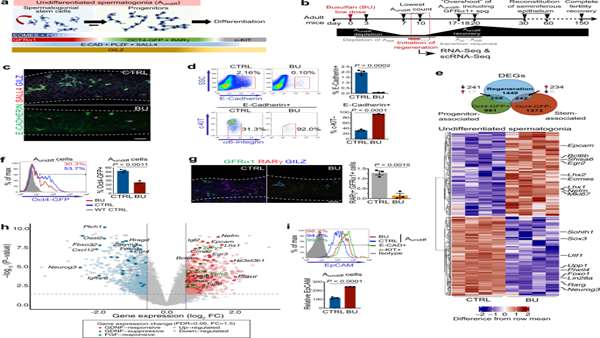Male fertility is sustained by spermatogonial stem cells (SSCs) within the testis that self-renew and produce differentiating germ cells for spermatogenesis. Germ cells are sensitive to chemotherapeutic agents and radiation, placing cancer patients at risk of treatment-induced infertility.
Using models of chemotherapy-induced germline damage and recovery, in this article, they identify unique molecular features of regenerative SSCs and characterise changes in composition of the undifferentiated spermatogonial pool during germline recovery by single-cell analysis. Increased mitotic activity of SSCs mediating regeneration is accompanied by alterations in growth factor signalling including PI3K/AKT and mTORC1 pathways. While sustained mTORC1 signalling is detrimental for SSC maintenance, transient mTORC1 activation is critical for the regenerative response. Concerted inhibition of growth factor signalling disrupts core features of the regenerative state and limits germline recovery. They also demonstrate that the FOXM1 transcription factor is a target of growth factor signalling in undifferentiated spermatogonia and provide evidence for a role in regeneration. Their data confirm dynamic changes in SSC functional properties following damage and support an essential role for microenvironmental growth factors in promoting a regenerative state.




ارسال به دوستان